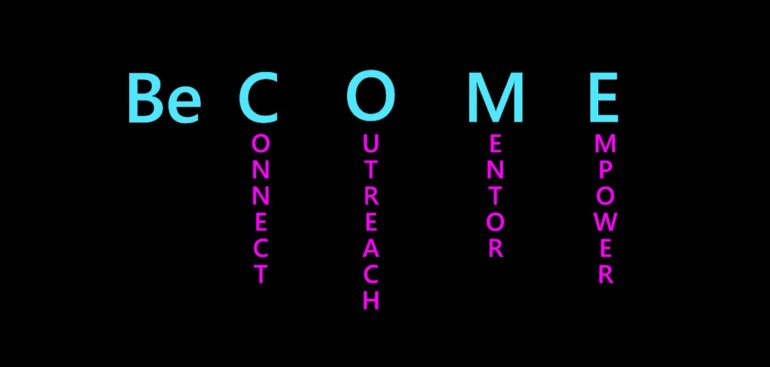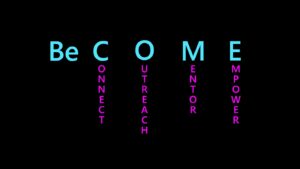A few years ago, I was having coffee with a couple of friends of mine. Like me, they were all too familiar with the struggles women face in the technology industry—being the only woman in the room, fighting to be heard and seen. It was over that cup of coffee that we decided we needed to do something about the gender equity gap in the tech industry.
During that conversation we agreed one of the biggest hurdles to gender equity is access—access to business opportunities, leadership positions, venture capital funding, and so on. The door doesn’t just swing open for women in tech. Historically, when we knock, no one answers. And that’s when we can actually find the door. Oftentimes, the entrance is hidden or inaccessible.
I remember after that discussion asking myself, how had I survived 27 years in this industry when the deck was stacked against me? How was I able to climb to a leadership position in one of the largest tech companies in the world, while others couldn’t even find the door?
It was because I had access to opportunities that eluded so many others. Of course, I worked my tail off to make the most of those opportunities. But it was the connections I made—and that others made on my behalf—that set me on a path to success. There was a key in connection and networking. I was one of the lucky ones who had found that key.
With that in mind, a group of women I work with created an organization called Women in Cloud (WiC). It’s a community-led economic development organization focused on access, action, and acceleration. Working with global leaders, corporations, and policymakers, WiC’s goal is to help women entrepreneurs create $1 billion in economic access and opportunity by 2030. It is led by an incredible woman, @Chaitra Vedullapalli, who is a force! Without her drive, commitment to action and dedication, we would not be able to reach each of these critical milestones. And my friends in that discussion, @Karen Fassio and @Gretchen O’Hara, have continued their support alongside me to create access for all women.
As WiC has evolved over the past three years, we’ve watched the community of women business owners grow exponentially, connecting hundreds of entrepreneurs to a network of peers and investors. Through its Cloud Accelerator program, WiC has helped 22 women-led companies build and market enterprise-ready technology solutions, creating $50 million in opportunity.
That’s what can happen when we take intentional steps to make a difference. And we need to do more.

I recently had the honor of giving a TEDx talk about the gender equity gap in technology. I am on a mission to bring gender parity to the industry. To get there, we need 8+ million additional women in tech roles than we have today. It’s going to take a lot of work. But together, we can do it.
During my talk, I shared four specific things every single one of us can do to close the gap and #BeCOME an agent of change. Over the next four weeks, I’ll be posting articles here on LinkedIn about each deliberate action we can take. The first is CONNECT.

Connect | Make intentional connections with women in your network. Reach out and give women access to yourself and to everyone in your community.
This intentional action can make all the difference in the world. Think about the introduction someone made for you that led to a new role or business opportunity. We all have those connections that changed our path and opened a door. What if that connection hadn’t been made? Would you be where you are today?
It’s time to return the favor by connecting. Join an organization like Women in Cloud or @The Women in Technology Network—another organization I sponsor. There are at least a dozen organizations that are dedicated to connecting women in the technology field and creating access to opportunities. When you #Connect, you #BeCOME an agent of change.
Next week, I’ll share the second way you can make a difference, through #Outreach. Until then, here are some organizations you can #Connect with:
Women in Cloud (Women in Cloud: Overview | LinkedIn) – Women in Cloud is a community-led economic development organization with a massive mission: to take action with global leaders, corporations and policymakers to help women entrepreneurs create $1 billion in economic access and opportunity by 2030. With its Cloud Accelerator program, Women in Cloud helps entrepreneurs build and market their distribution channels.
The WIT Network (The WIT Network: Overview | LinkedIn) – The WIT Network is a global community of professional women and men who encourage all women and girls to study STEM and pursue careers in technology. With more than 80 communities in more than 30 countries, they enable more women to attain leadership positions and career advancement, and help companies change the landscape of gender equality within their business.
Women in Tech (WOMEN IN TECH – Global Movement: Overview | LinkedIn) – Women in Tech is an international organization with a double mission: to close the gender gap and to help women embrace technology. They focus on 4 primary areas of action: Education, Entrepreneurialism, Social Inclusion, Science & Innovation. With a global footprint, Women in Tech aims to educate, equip and empower women and girls with the necessary skills, confidence and opportunities to succeed in STEM career fields.
Girls in Tech (Girls in Tech, Inc.: Overview | LinkedIn)– Girls in Tech is a nonprofit organization dedicated to eliminating the gender gap in tech. With more than 60,000 members in 50+ chapters around the world, organizers host hackathons, coding bootcamps, startup pitch competitions, and more.
mBolden (mBolden: Overview | LinkedIn) – mBolden is a global community of 10,000+ women working together to support and empower female leadership. They strive to help women raise their voice and visibility in the mobile, digital marketing, and online industries. With 10 chapters in cities across the US and worldwide, mBolden connects female entrepreneurs and leaders.
Girls Who Code (Girls Who Code: Overview | LinkedIn) – Girls Who Code is on a mission to close the gender gap in technology and to change the image of what a programmed looks like and does. They’re reaching girls around the world teaching not just coding, but also the values of bravery, sisterhood, and activism.
The National Center for Women & Information Technology (NCWiT AiC (The National Center for Women & Information Technology- Aspirations in Computing) | Groups | LinkedIn) – NCWIT is a non-profit community chartered in 2004 by the National Science Foundation. They convene, equip, and unite change-leader organizations to increase the influential and meaningful participation of girls and women in the field of computing, particularly in terms of innovation and development. NCWIT help 1,400+ organizations recruit, retain, and advance women from K-12 and higher education through industry and entrepreneurial careers by providing support, evidence, and action.
Women Who Code (Women Who Code: Overview | LinkedIn) – Women Who Code envisions a world where women are proportionally represented as technical leaders, executives, founders, VCs, board members, and software engineers. Through a global community of networking, they empower women for professional achievement. They educate companies to promote, retain, and hire talented women. And they develop role models to support today’s generation of engineers.
Change Catalyst (Change Catalyst: Overview | LinkedIn) – Change Catalyst builds inclusive tech ecosystems through strategic advising, startup programs and resources, and a series of events around the globe. Using culture and behavior change strategies, we convene and advise the tech ecosystem to drive solutions to diversity and inclusion together: across education, workplace, entrepreneurship, policy, media/entertainment and ecosystem builders.











